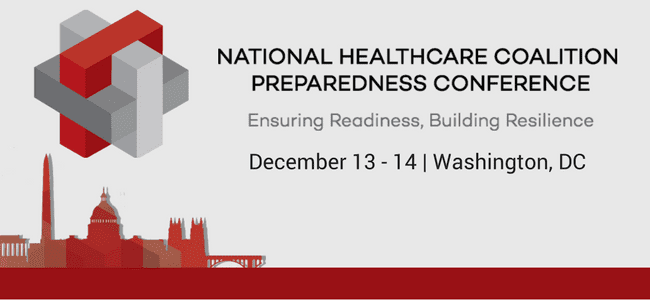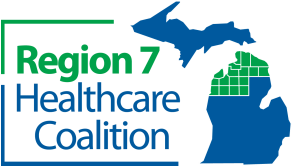|
See below for the Zika Virus 10 Commandments referenced during this morning's "Lessons Learned from 2016" Panel. These are also posted on our website, www.healthcarecoalitions.org. ZIKA VIRUS DISEASE - Introduction
•Zika Virus is an ARBOR Virus meaning Virus is transmitted by arthropods like mosquitoes. •Closely related to Dengue/Yellow Fever/West Nile/ Japanese Encephalitis Virus •First isolated in a Monkey in Zika forest of Uganda in 1947, hence the name •Prior to 2007 only sporadic cases in Africa and Southeast Asia •In 2007 first outbreak on Yap Island in Micronesia •In 2013-14 more than 28,000 suspected cases reported from French Polynesia •In May 2015 first locally acquired case in Brazil and since then it has spread to 62 countries/territories including 51 in Americas •As of December 7th, 2016 there have been 4575 cases in continental USA, mostly travel associated including 1172 pregnant women with largest numbers in Florida followed by New York State. 32 Live born infants with birth defects and 5 pregnancy losses with birth defects. 13 cases of Guillain-Barre Syndrome. •As of December 7th, 2016 there have been 33838 cases in US Territories including 2639 pregnant women, mostly in Puerto Rico, but some in American Samoa and Virgin Islands. The vast majority of these cases are locally acquired. 50 cases of Guillain-Barre Syndrome •Zika Virus is mostly transmitted by the bite of infected female mosquitoes, infected mother to child transmission during pregnancy and at time of delivery, through sex, blood transfusion and laboratory exposure. One case of infection in a caregiver has been reported in USA •Incubation period is around 3-12 days and usual symptoms are fever, conjunctivitis, rash, arthralgia, headache and retro orbital pain. Symptoms usually last 2-7 days and 4 out of 5 cases are asymptomatic •Disease is usually mild with only 3% cases hospitalized and 1 death in Continental USA •Main Problem with Zika Virus is causing Congenital Zika Syndrome (severe microcephaly, thinning of cerebral cortices and sub-cortical calcifications, scarring of retina, congenital contractures and marked early hypertonia). Loss of pregnancy and Guillain-Barré Syndrome have also been associated •Prevention is mainly through mosquito control, preventing mosquito bites, prevention of sexual transmission and use of Zika screened negative blood. •Vaccine is being developed and may be available in 2018 or after Ten Commandments for Zika Virus Planning, Preparation and Response in Health Care Facilities 1. Create a Task Force for Zika Planning, Preparation and Response a.Appoint a collaborative credible leader to chair the group b. Have OB/Pediatrics/Emergency Department/Clinics/Health Department/Environmental Services/ Lab/IT/Infection Control/Infectious Disease/Neurology and Public Relations representation on the Taskforce c.Buy in and commitment for Support and Resources from Executive Leadership d.Meet regularly at least every 2 week increasing to every week as needed 2.Develop a Zika Disease Protocol a.Include a section for Triage based on exposure history and travel history b.A section for clinicians who will evaluate these patients in the Emergency Department, Clinicians, Labor Delivery area and Private offices c.A section for pregnant women who are asymptomatic d.A section for Infants born to Zika positive moms and infants with microcephaly or other feature of congenital Zika syndrome e.A section for laboratory staff and infection control f.Post the protocol on hospital intranet portal along with current pertinent Zika guidance from CDC/ Department of Health (DOH) g.Update the protocol regularly 3.Educate yourself on the CDC/DOH guidance about Zika Virus Disease as they come out and share with Zika taskforce and appropriate staff a.Check CDC/DOH Zika site once a day b.Signup with CIDRAP for their daily updates c.Once a week review WHO Zika Situation Reports d.Have CDC number readily available for "24/7 consultation service" for healthcare providers caring for pregnant women with possible Zika Virus Infection (770 488-7100). e.Have "Mother to Baby" Hotline number for Zika Virus and Pregnancy Answers readily available (1-866-626-6847) 4.Educate your staff (Clinical and Nonclinical) about Zika Virus Disease a. Getting Zika exposure and signs and symptoms history at all areas where patients encounter occurs b. What specimen samples are needed for Zika testing and what approval process (from Health Department) and paper work is needed to submit those samples to the DOH/CDC reference labs. c. How to interpret the Zika Test results d. Guidance about ordering fetal ultrasounds at different stages of pregnancy e. CDC travel advisories for areas with active Zika transmission f. Prevention of mosquito bites g. Mosquito control h. Prevention of sexual transmission and transmission by blood transfusion 5.Work with your IT Department to create Zika Screening/Zika testing workflows and uploading Zika test results into EMR. 6.Work with your hospital laboratory to keep a log of all Zika tests ordered, pregnancy status of patients, test results received and notification of Healthcare Provider who ordered the test a.Educate and train your laboratory staff in appropriate packaging and shipping of Zika Specimens to reference lab or commercial laboratories where those test will be performed 7.Have your Blood Bank work with your blood supplier to ensure that FDA guidelines for screening donors and donor blood, for Zika, are followed and implement protocols for Zika negative blood at your institution a.Have your transplant services and fertility service also follow CDC/FDA guidelines to prevent Zika Transmission 8.Educate your occupational Health Services on how to evaluate employees coming up with Zika exposure or Zika Symptoms and to provide outdoor employees with mosquito repellents and to require them to wear long sleeve shirts and other strategies to prevent mosquito bites. Assign outdoor pregnant workers to indoor areas. Have Environmental Services arrange mosquito spray on property where needed. 9.Assemble a Pediatric Zika team for infants born to mothers with positive Zika tests or infants who have any features of Congenital Zika Syndrome. Include Neonatology, Ophthalmology, Neurology, Endocrine, Genetic Specialist, Behavioral Health Specialist, Audiologist and others on this team. 10.Meet regularly and work collaboratively with your local health department, your reference lab and your county mosquito control leadership to resolve issues as they come up. LEAVE YOUR EGO AT THE DOOR Comments are closed.
|
Archives
January 2017
Archives
January 2017
Categories
All
|
To activate the Region 7
Medical Coordination Center call:
Gaylord Regional
Communication Center
1-989-732-5141
During your call, include the following information:
- Your name and contact number.
- Your agency or hospital.
- The reason for requesting the resource.
- Exact location to where you need the resource delivered.
- Who will accept and sign for the resource.
Medical Coordination Center call:
Gaylord Regional
Communication Center
1-989-732-5141
During your call, include the following information:
- Your name and contact number.
- Your agency or hospital.
- The reason for requesting the resource.
- Exact location to where you need the resource delivered.
- Who will accept and sign for the resource.
Site Map |
Organization |
Copyright © 2014 | 2464 Silver Fox Trail Suite A, Gaylord MI 49735 | 989.748.4975
|

 RSS Feed
RSS Feed
